Let's take another approach, which does not require any code.
Assume your data is in columns A (sequence number or time) and B value, starting in A2 and B2, since your labels are in A1 and B1. We'll add a series to the chart that includes any deviant values from column B. This series will draw a marker in front of any deviant points so the original point will still be present, and instead of reformatting this point the new series displays a point.
In cell C1, enter "Deviant".
In Cell C2, enter a formula that detects a deviant point, something like:
=IF(AND(B2>upperlimit,B2
This puts the value into column C if column B exceeds upper and lower limits, otherwise it puts #N/A into column C, #N/A will not result in a plotted point.
Copy the data in column C, select the chart, and Paste Special as a new series. Format this series to have no line and whatever glaring marker you want to use to indicate an out of control point.
